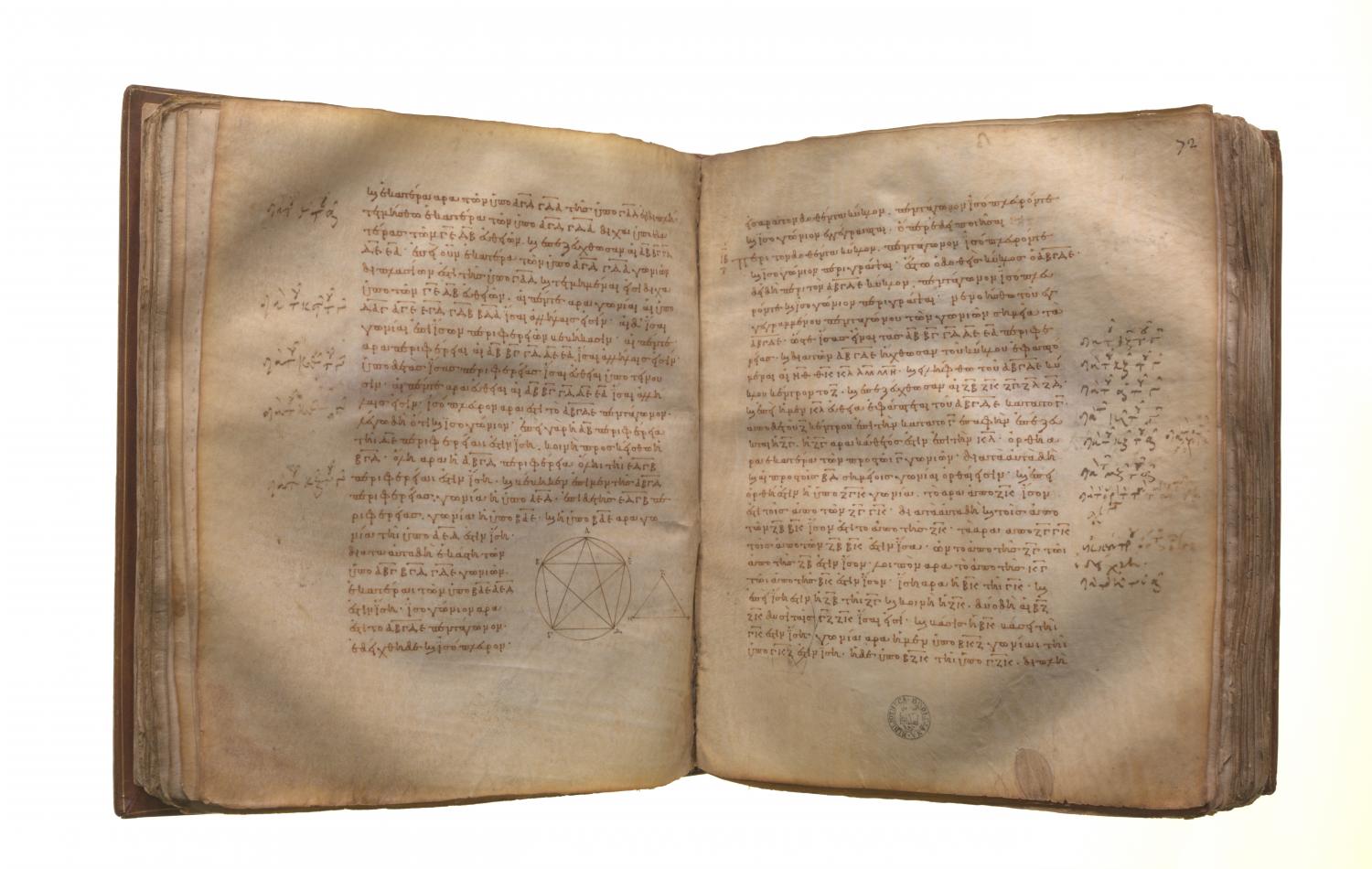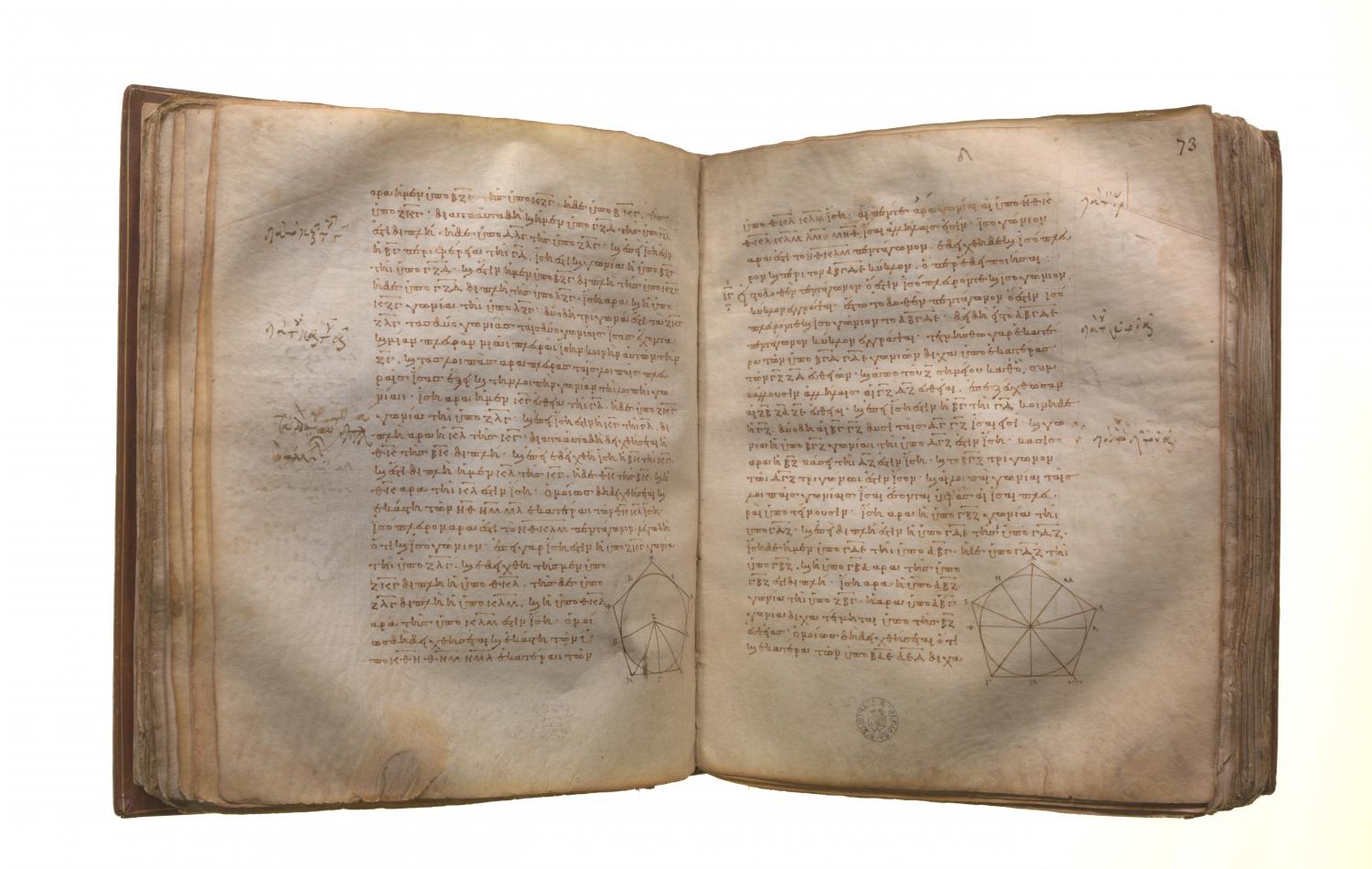Constructions for inscribed and circumscribed figures: Book 4 Proposition 12
Translations
About a given circle to circumscribe an equilateral and equiangular pentagon. Let ABCDE be the given circle; thus it is required to circumscribe an equilateral and equiangular pentagon about the circle ABCDE. Let A, B, C, D, E be conceived to be the angular points of the inscribed pentagon, so that the circumferences AB, BC, CD, DE, EA are equal; [IV. 11] through A, B, C, D, E let GH, HK, KL, LM, MG be drawn touching the circle; [III. 16, Por.] let the centre F of the circle ABCDE be taken [III. 1], and let FB, FK, FC, FL, FD be joined. Then, since the straight line KL touches the circle ABCDE at C, and FC has been joined from the centre F to the point of contact at C, therefore FC is perpendicular to KL; [III. 18] therefore each of the angles at C is right. For the same reason the angles at the points B, D are also right. And, since the angle FCK is right, therefore the square on FK is equal to the squares on FC, CK. For the same reason [I. 47] the square on FK is also equal to the squares on FB, BK; so that the squares on FC, CK are equal to the squares on FB, BK, of which the square on FC is equal to the square on FB; therefore the square on CK which remains is equal to the square on BK. Therefore BK is equal to CK. And, since FB is equal to FC, and FK common, the two sides BF, FK are equal to the two sides CF, FK; and the base BK equal to the base CK; therefore the angle BFK is equal to the angle KFC, [I. 8] and the angle BKF to the angle FKC. Therefore the angle BFC is double of the angle KFC, and the angle BKC of the angle FKC. For the same reason the angle CFD is also double of the angle CFL, and the angle DLC of the angle FLC. Now, since the circumference BC is equal to CD, the angle BFC is also equal to the angle CFD. [III. 27] And the angle BFC is double of the angle KFC, and the angle DFC of the angle LFC; therefore the angle KFC is also equal to the angle LFC. But the angle FCK is also equal to the angle FCL; therefore FKC, FLC are two triangles having two angles equal to two angles and one side equal to one side, namely FC which is common to them; therefore they will also have the remaining sides equal to the remaining sides, and the remaining angle to the remaining angle; [I. 26] therefore the straight line KC is equal to CL, and the angle FKC to the angle FLC. And, since KC is equal to CL, therefore KL is double of KC. For the same reason it can be proved that HK is also double of BK. And BK is equal to KC; therefore HK is also equal to KL. Similarly each of the straight lines HG, GM, ML can also be proved equal to each of the straight lines HK, KL; therefore the pentagon GHKLM is equilateral. I say next that it is also equiangular. For, since the angle FKC is equal to the angle FLC, and the angle HKL was proved double of the angle FKC, and the angle KLM double of the angle FLC, therefore the angle HKL is also equal to the angle KLM. Similarly each of the angles KHG, HGM, GML can also be proved equal to each of the angles HKL, KLM; therefore the five angles GHK, HKL, KLM, LMG, MGH are equal to one another. Therefore the pentagon GHKLM is equiangular.

